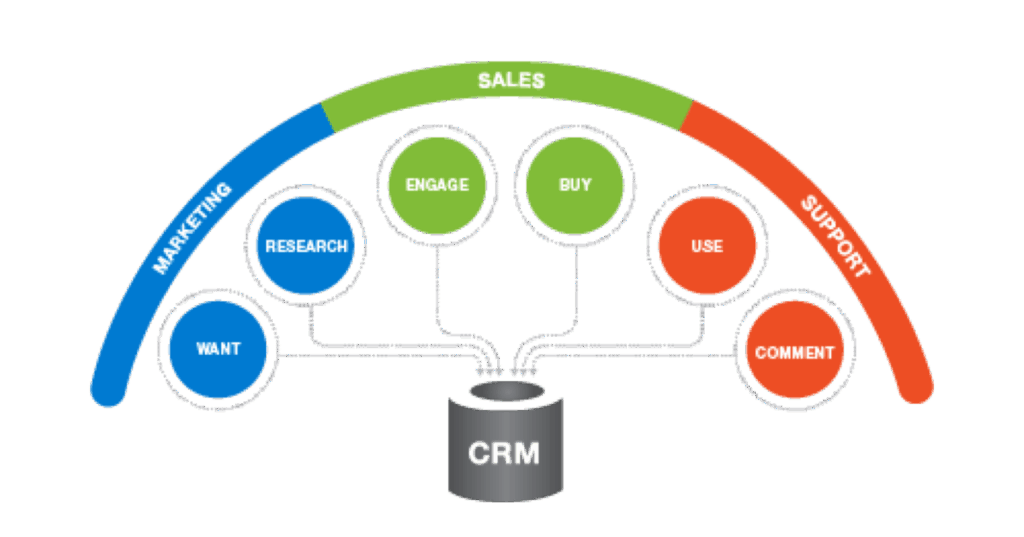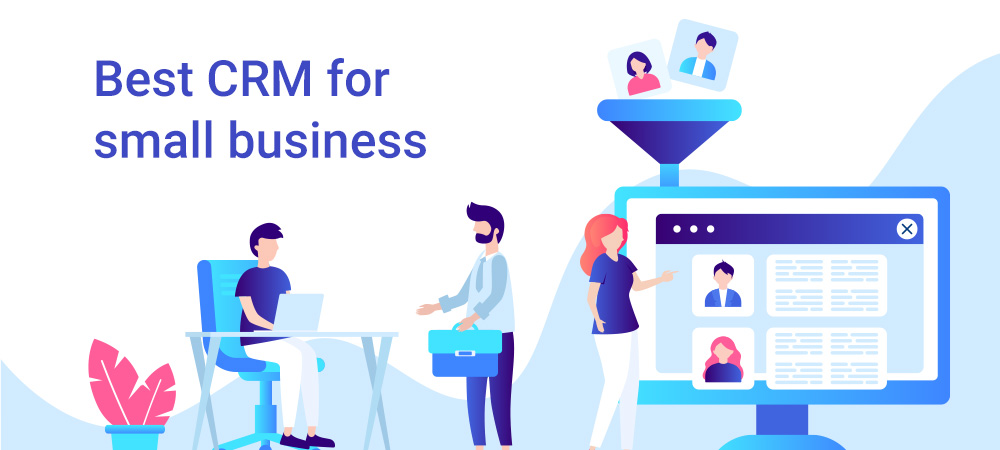
Small Business CRM Implementation: A Step-by-Step Guide to Boost Customer Relationships and Drive Growth
Starting a small business is an exciting journey. You’re brimming with ideas, passion, and the drive to build something from the ground up. However, as your customer base grows, so does the complexity of managing those crucial relationships. That’s where a Customer Relationship Management (CRM) system comes in. It’s more than just a fancy piece of software; it’s the backbone of your customer interactions, sales processes, and overall business growth. This comprehensive guide will walk you through the process of small business CRM implementation, ensuring you get the most out of this powerful tool.
What is a CRM and Why Does Your Small Business Need One?
Before diving into implementation, let’s clarify what a CRM is. A CRM system is a software solution that helps businesses manage interactions with current and potential customers. It centralizes customer data, streamlines communication, automates tasks, and provides valuable insights into customer behavior and sales performance. Think of it as the central nervous system of your customer-facing operations.
Why is a CRM so vital for a small business? Here are a few compelling reasons:
- Improved Customer Relationships: A CRM allows you to personalize interactions, remember important details, and proactively address customer needs, leading to increased satisfaction and loyalty.
- Increased Sales: By tracking leads, managing sales pipelines, and automating follow-ups, a CRM can significantly boost your sales conversion rates.
- Enhanced Efficiency: Automate repetitive tasks, such as data entry and email marketing, freeing up your team to focus on more strategic initiatives.
- Better Data Analysis: Gain valuable insights into customer behavior, sales trends, and marketing campaign performance, enabling data-driven decision-making.
- Centralized Information: All customer data is stored in one place, eliminating the chaos of scattered spreadsheets and emails.
- Improved Team Collaboration: CRM systems facilitate seamless communication and collaboration among team members, ensuring everyone is on the same page.
Step 1: Define Your Business Needs and Goals
Before you even start looking at CRM options, take a step back and define your specific needs and goals. What do you hope to achieve with a CRM? What are the biggest challenges you currently face in managing customer relationships and sales processes?
Consider the following questions:
- What are your primary goals? (e.g., Increase sales, improve customer retention, streamline marketing efforts)
- What are your pain points? (e.g., Difficulty tracking leads, inefficient communication, lack of data visibility)
- What are your key processes? (e.g., Sales pipeline, customer onboarding, customer support)
- Who will be using the CRM? (Identify all users and their roles)
- What data do you need to track? (Customer information, sales activities, marketing campaign performance)
Documenting your needs and goals will serve as a roadmap for your CRM implementation. It will help you select the right CRM system, configure it effectively, and measure its success.
Step 2: Research and Select the Right CRM System
With your needs and goals clearly defined, it’s time to research and select the CRM system that best fits your small business. The market is flooded with options, so take your time to explore the different solutions and their features.
Consider the following factors when evaluating CRM systems:
- Features: Does the CRM offer the features you need, such as contact management, sales automation, marketing automation, and reporting?
- Scalability: Can the CRM grow with your business? Will it be able to handle a larger customer base and more complex processes in the future?
- Ease of Use: Is the CRM user-friendly and intuitive? If it’s too complicated, your team won’t use it effectively.
- Integration: Does the CRM integrate with other tools you use, such as email marketing platforms, accounting software, and social media channels?
- Pricing: What is the cost of the CRM? Consider the subscription fees, implementation costs, and ongoing maintenance expenses.
- Support: Does the CRM provider offer adequate customer support?
- Reviews and Ratings: Read reviews from other small businesses to get insights into their experiences with the CRM.
- Free Trials: Take advantage of free trials to test out different CRM systems and see which one you like best.
Popular CRM options for small businesses include:
- HubSpot CRM: A free CRM with powerful features for contact management, sales, and marketing.
- Zoho CRM: A comprehensive CRM with a wide range of features and affordable pricing.
- Salesforce Sales Cloud: A robust CRM with a wide range of features, but it can be more complex and expensive.
- Pipedrive: A sales-focused CRM with a user-friendly interface and strong pipeline management capabilities.
- Insightly: A CRM designed specifically for small businesses.
Once you’ve narrowed down your choices, create a shortlist and compare the features, pricing, and reviews of each CRM system. Choose the one that best aligns with your business needs and budget.
Step 3: Plan Your Implementation Strategy
Before you jump into implementation, create a detailed plan. A well-defined implementation strategy will ensure a smooth transition and minimize disruptions to your business operations.
Your implementation plan should include the following:
- Project Timeline: Set realistic deadlines for each stage of the implementation process.
- Data Migration Plan: Determine how you will migrate your existing customer data from spreadsheets, emails, and other sources into the CRM.
- User Training Plan: Develop a training program to educate your team on how to use the CRM effectively.
- Configuration Plan: Define how you will configure the CRM to meet your specific needs, including custom fields, workflows, and integrations.
- Testing Plan: Test the CRM thoroughly before you roll it out to your entire team.
- Communication Plan: Keep your team informed about the implementation progress and address any concerns they may have.
Consider breaking down the implementation into phases. You can start with a pilot program involving a small group of users, then gradually roll out the CRM to the rest of your team. This approach allows you to identify and address any issues before a full-scale launch.
Step 4: Data Migration and Setup
Data migration is a crucial step in the CRM implementation process. It involves transferring your existing customer data from various sources into the CRM system. This can be a time-consuming task, so it’s essential to plan it carefully.
Here’s how to approach data migration:
- Clean Your Data: Before migrating your data, clean it up. Remove duplicate entries, correct errors, and standardize the formatting.
- Choose a Migration Method: You can manually enter data, use a CSV file import, or use a data migration tool. The best method depends on the amount of data you have and the complexity of the data structure.
- Map Your Fields: Map the data fields from your existing sources to the corresponding fields in the CRM.
- Test Your Migration: Before migrating all of your data, test the process with a small sample. This will help you identify and fix any issues.
- Back Up Your Data: Always back up your data before starting the migration process.
Once your data is migrated, configure the CRM to meet your specific needs. This includes:
- Customizing Fields: Add custom fields to store information that is specific to your business.
- Setting Up Workflows: Automate repetitive tasks, such as lead assignment and follow-up emails.
- Integrating with Other Tools: Connect the CRM with other tools you use, such as email marketing platforms and accounting software.
- Configuring User Roles and Permissions: Define user roles and permissions to control access to data and features.
Step 5: Training Your Team
No matter how good your CRM system is, it’s only as effective as the people using it. Providing comprehensive training to your team is essential for ensuring successful CRM adoption.
Your training program should cover the following topics:
- CRM Basics: Introduce the CRM system and its features.
- Data Entry: Teach users how to enter and manage customer data.
- Sales Processes: Explain how to use the CRM to manage leads, opportunities, and sales pipelines.
- Communication: Demonstrate how to use the CRM to communicate with customers via email, phone, and other channels.
- Reporting and Analytics: Show users how to generate reports and analyze data to gain insights into their performance.
- Best Practices: Share best practices for using the CRM effectively.
Use a variety of training methods, such as:
- In-person training: Conduct hands-on training sessions for your team.
- Online tutorials: Create online tutorials or use the CRM provider’s training resources.
- Documentation: Provide detailed documentation and user guides.
- On-the-job training: Encourage users to practice using the CRM in their daily work.
Provide ongoing support and answer any questions your team may have. Encourage them to experiment with the CRM and provide feedback. Regular training sessions and refresher courses can help your team stay up-to-date on the latest features and best practices.
Step 6: Launch and Monitor
With your CRM configured, data migrated, and team trained, it’s time to launch the system. Start with a soft launch, allowing a few users to test the system and provide feedback. Then, gradually roll it out to the rest of your team.
After the launch, continuously monitor the CRM’s performance and make adjustments as needed. Track key metrics, such as sales conversion rates, customer satisfaction, and user adoption. Identify any areas where the CRM is not performing as expected and take corrective action.
Regularly review your CRM implementation plan and make updates as your business evolves. Stay up-to-date on the latest CRM features and best practices. By continuously optimizing your CRM, you can ensure that it remains a valuable tool for your small business.
Step 7: Analyze and Optimize
The implementation doesn’t end with the launch. The real work begins with analyzing the data and optimizing your CRM usage for maximum impact. This is an ongoing process that requires constant attention and adaptation.
Here’s how to analyze and optimize your CRM:
- Track Key Metrics: Monitor your CRM’s performance by tracking key metrics such as sales conversion rates, customer acquisition cost, customer lifetime value, and customer satisfaction scores.
- Analyze Data: Regularly analyze the data in your CRM to identify trends, patterns, and areas for improvement. Look for insights into customer behavior, sales performance, and marketing campaign effectiveness.
- Generate Reports: Use the reporting features of your CRM to generate regular reports on key metrics. This will help you track your progress and identify areas where you need to make adjustments.
- Get Feedback: Gather feedback from your team on their experiences using the CRM. What features are they finding helpful? What challenges are they facing? Use this feedback to improve your CRM configuration and training programs.
- Make Adjustments: Based on your analysis and feedback, make adjustments to your CRM configuration, workflows, and processes. This might involve adding custom fields, modifying workflows, or integrating with new tools.
- Regular Audits: Conduct regular audits of your CRM to ensure data accuracy, compliance with regulations, and effective user adoption.
The goal is to continuously refine your CRM strategy and optimize its use to achieve your business goals. By actively analyzing and optimizing, you can ensure that your CRM remains a valuable asset for your small business.
Challenges and How to Overcome Them
Implementing a CRM system can present some challenges. Being prepared for these potential hurdles can help you navigate the process more smoothly.
Here are some common challenges and how to overcome them:
- Low User Adoption: If your team doesn’t use the CRM effectively, it won’t deliver the expected results. To overcome this, provide adequate training, make the CRM user-friendly, and demonstrate its value to your team.
- Data Migration Issues: Data migration can be complex and time-consuming. To minimize issues, clean your data before migration, choose the right migration method, and test the process thoroughly.
- Lack of Integration: If your CRM doesn’t integrate with other tools you use, it can create data silos and inefficiencies. Choose a CRM that integrates with your existing tools or explore integration options.
- Cost Overruns: CRM implementation can be more expensive than expected. Carefully budget for all costs, including subscription fees, implementation costs, and ongoing maintenance expenses.
- Resistance to Change: Some team members may be resistant to adopting a new system. Address their concerns, provide adequate training, and emphasize the benefits of the CRM.
- Data Accuracy Issues: Inaccurate data can undermine the value of your CRM. Implement data validation rules, train your team on data entry best practices, and regularly audit your data.
By anticipating these challenges and taking proactive steps to address them, you can increase your chances of a successful CRM implementation.
Maximizing the Benefits of Your CRM
Implementing a CRM is a significant investment, so it’s crucial to maximize its benefits. Here are some tips to help you get the most out of your CRM:
- Use all the Features: Don’t just use the basic features. Explore all the features your CRM offers and leverage them to streamline your processes and gain insights.
- Automate Tasks: Automate repetitive tasks, such as lead assignment, follow-up emails, and data entry, to free up your team’s time and improve efficiency.
- Personalize Interactions: Use the data in your CRM to personalize your interactions with customers. This can include sending targeted emails, offering personalized recommendations, and providing tailored customer service.
- Track Key Metrics: Monitor key metrics to track your progress and identify areas for improvement.
- Regularly Review and Update Your Strategy: Your business needs and goals will evolve over time. Regularly review your CRM strategy and make adjustments as needed.
- Foster a Data-Driven Culture: Encourage your team to use data to inform their decisions. Make data readily available and provide training on how to analyze and interpret it.
- Integrate Social Media: Integrate your CRM with your social media channels to track social media interactions, monitor brand mentions, and engage with customers.
- Utilize Mobile Access: Choose a CRM with mobile access so your team can access customer data and manage their tasks on the go.
By following these tips, you can unlock the full potential of your CRM and drive significant improvements in your customer relationships, sales performance, and overall business growth.
Conclusion
Implementing a CRM system is a transformative step for any small business looking to enhance customer relationships, streamline sales processes, and drive growth. By following the steps outlined in this guide, you can successfully implement a CRM system and unlock its full potential. Remember to define your needs, choose the right CRM, plan carefully, train your team, and continuously monitor and optimize your efforts. With the right approach, a CRM can become the engine that drives your business forward, fostering stronger customer relationships, boosting sales, and enabling data-driven decision-making. Embrace the power of CRM, and watch your small business thrive.


